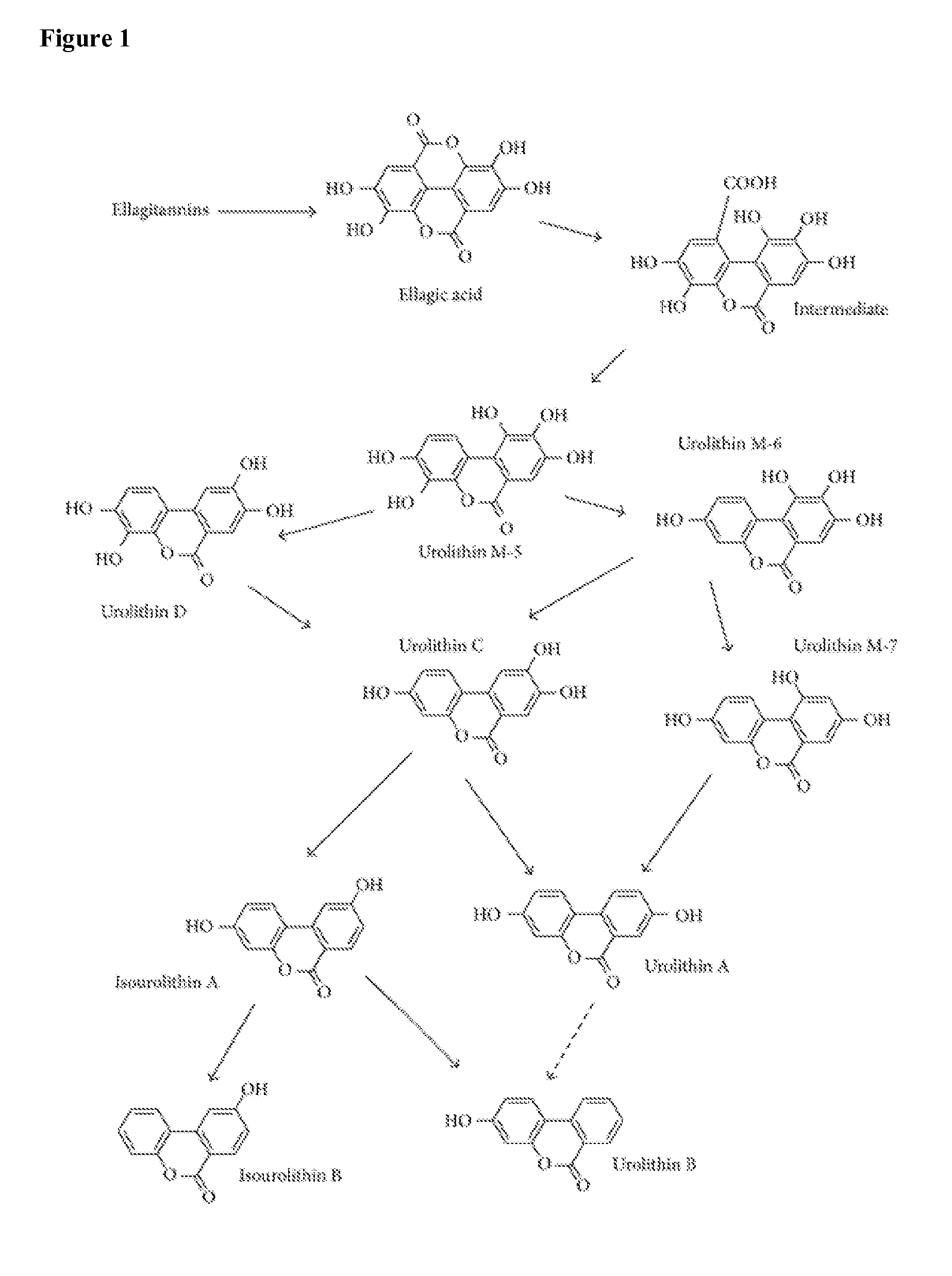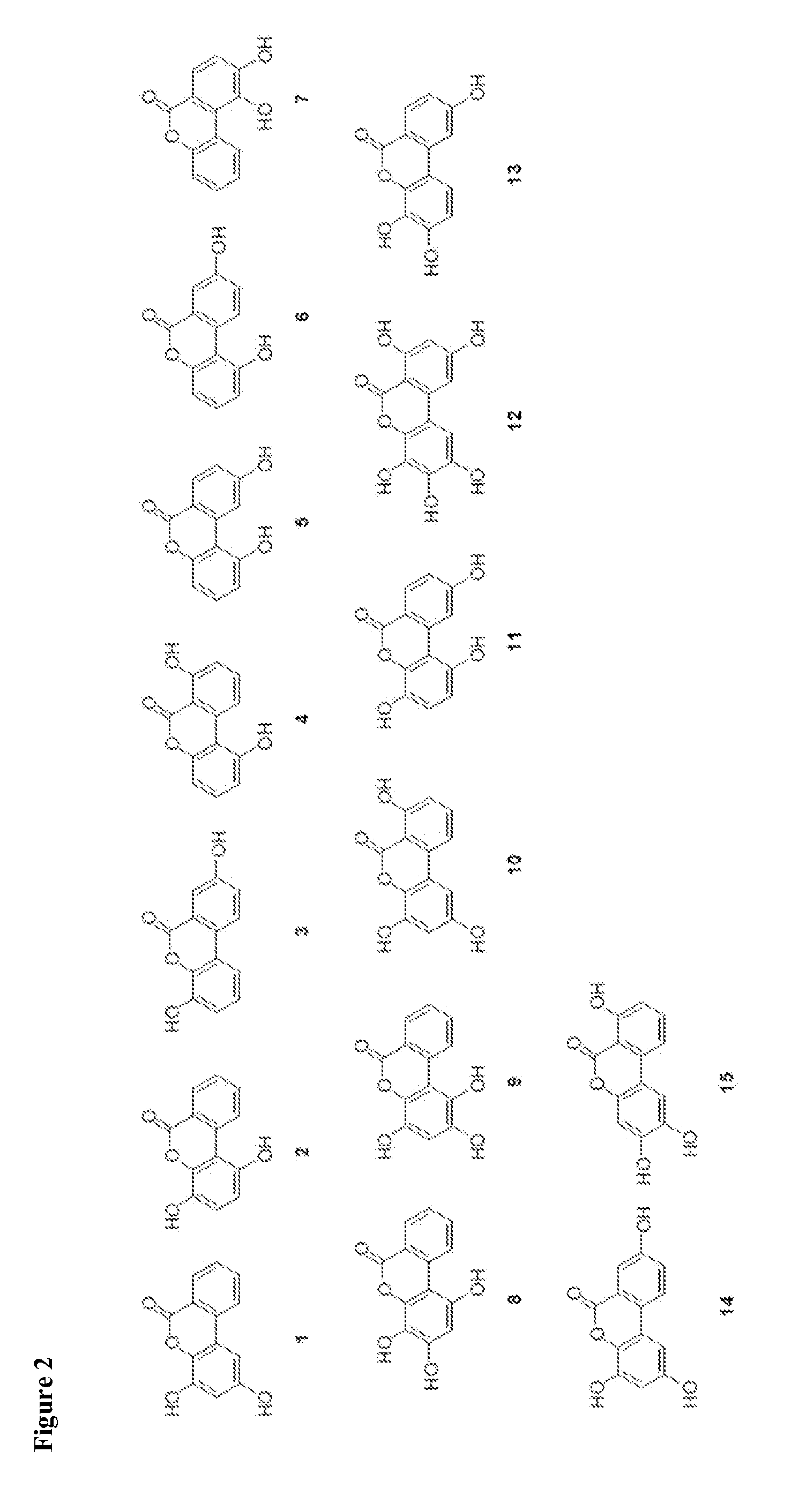Process-Scale Synthesis of Urolithins
a technology of urolithins and urolithins, which is applied in the field of process-scale synthesis of urolithins, can solve the problems of limited knowledge of their bioavailability, pharmacokinetics, disposition and metabolic fate in humans, and the inability to achieve sufficient bioavailability of therapeutic metabolites from consumption of these foods
- Summary
- Abstract
- Description
- Claims
- Application Information
AI Technical Summary
Benefits of technology
Problems solved by technology
Method used
Image
Examples
example 1
Ullmann-Type Coupling of a Halogenated Benzoic Acid with a (Di)Hydroxybenzene
[0174]Described herein is the first step in a short and practical synthesis of urolithins beginning with the commercially available reagents 2-bromo-5-methoxy benzoic acid and resorcinol. This step is an Ullmann reaction and is applicable to a variety of alternate precursors leading to other urolithin intermediates.
[0175]The Ullmann reaction, or Ullmann coupling, is a reductive coupling of aryl halides discovered over 100 years ago. Classically, this reaction requires a stoichiometric copper catalyst, extended reaction times, and extremely harsh conditions. An active copper powder that is required for this reaction can be prepared by the reduction of copper sulfate by zinc metal in hot water causing the precipitation of elementary copper. The reaction often requires high-boiling polar solvents such as N-methylpyrrolidone, nitrobenzene or dimethylformamide and high temperatures (often in excess of 210° C.) w...
example 2
Demethylation of Ullmann Coupling Product
[0190]To prepare the desired urolithin compounds, it is necessary to remove one or more methyl groups used to protect the hydroxyl(s) of the coupling partners in the first step described above. Such reactions can be unpredictable and often require harsh conditions. One reagent frequently used in this reaction is BBr3, a highly toxic and reactive reagent that violently decomposes in contact with water to form HBr gas, itself a toxic and corrosive strong acid. These drawbacks make BBr3 relatively costly and difficult to purchase and ship in the large quantities required for process-scale work. For these reasons an alternative was sought. Remarkably, the preparation of compound urolithin A from mono-methyl ether 8-methyl urolithin A was accomplished by ether deprotection with aluminum chloride (AlCl3) in an efficient and advantageous manner. Urolithin A was provided in improved yield and under less costly, safer, and simpler conditions than in k...
example 3
Preparation of Urolithin B
[0206]
[0207]Urolithin B was prepared in one step by coupling resorcinol and 2-bromobenzoic acid following the procedure for the preparation of Urolithin A. The pure compound was obtained as a off-white powder with a yield of 61.6%.
PUM
| Property | Measurement | Unit |
|---|---|---|
| Fraction | aaaaa | aaaaa |
| Fraction | aaaaa | aaaaa |
| Fraction | aaaaa | aaaaa |
Abstract
Description
Claims
Application Information
 Login to View More
Login to View More - R&D
- Intellectual Property
- Life Sciences
- Materials
- Tech Scout
- Unparalleled Data Quality
- Higher Quality Content
- 60% Fewer Hallucinations
Browse by: Latest US Patents, China's latest patents, Technical Efficacy Thesaurus, Application Domain, Technology Topic, Popular Technical Reports.
© 2025 PatSnap. All rights reserved.Legal|Privacy policy|Modern Slavery Act Transparency Statement|Sitemap|About US| Contact US: help@patsnap.com



